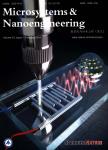A microfluidic biosensor for the diagnosis ofchronic wasting disease
作者机构:University of Missouri–ColumbiaElectrical Engineering and Computer ScienceColumbiaMOUSA University of Missouri–ColumbiaCollege of Veterinary MedicineVeterinary Medical Diagnostic LaboratoryColumbiaMOUSA Missouri Department of ConservationColumbiaMOUSA
出 版 物:《Microsystems & Nanoengineering》 (微系统与纳米工程(英文))
年 卷 期:2023年第9卷第4期
页 面:263-279页
核心收录:
学科分类:080202[工学-机械电子工程] 08[工学] 0802[工学-机械工程]
主 题:fir diagnosis specificity
摘 要:Cervids are affected by a neurologic disease that is always fatal to individuals and has population effects. This disease iscalled chronic wasting disease (CWD) and is caused by a misfolded prion protein. The disease is transmitted viacontact with contaminated body fluids and tissue or exposure to the environment, such as drinking water or *** CWD diagnosis depends on ELISA screening of cervid lymph nodes and subsequent immunohistochemistry(IHC) confirmation of ELISA-positive results. The disease has proven to be difficult to control in part because ofsensitivity and specificity issues with the current test regimen. We have investigated an accurate, rapid, and low-costmicrofluidic microelectromechanical system (MEMS) biosensing device for the detection of CWD pathologic prions inretropharyngeal lymph nodes (RLNs), which is the current standard type of CWD diagnostic sample. The deviceconsists of three novel regions for concentrating, trapping, and detecting the prion. The detection region includes anarray of electrodes coated with a monoclonal antibody against pathologic prions. The experimental conditions wereoptimized using an engineered prion control antigen. Testing could be completed in less than 1 hour with highsensitivity and selectivity. The biosensor detected the engineered prion antigen at a 1:24 dilution, while ELISA detectedthe same antigen at a 1:8 dilution. The relative limit of detection (rLOD) of the biosensor was a 1:1000 dilution of aknown strong positive RLN sample, whereas ELISA showed a rLOD of 1:100 dilution. Thus, the biosensor was 10 timesmore sensitive than ELISA, which is the currently approved CWD diagnostic test. The biosensor’s specificity andselectivity were confirmed using known negative RPLN samples, a negative control antibody (monoclonal antibodyagainst bovine coronavirus BCV), and two negative control antigens (bluetongue virus and Epizootic hemorrhagicdisease virus). The biosensor’s ability to detect pathogenic prions was



